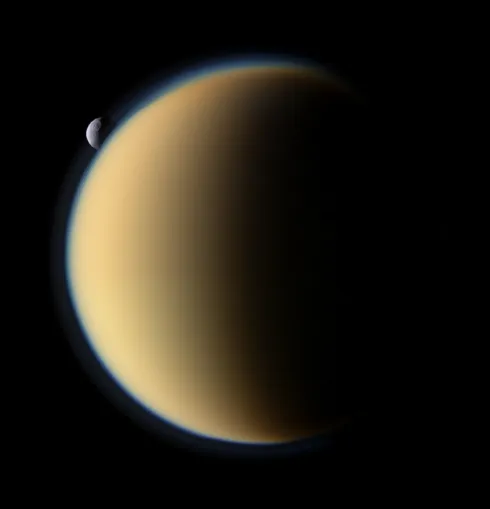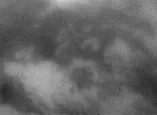
Picture credit: NASA/JPL/Space Science Institute
Saturn's largest moon, Titan, is blanketed by haze far worse than any smog belched out in Los Angeles or Beijing.
However, the dirty orange ball of a moon is the only one in our Solar System with an atmosphere worthy of a planet – a haze made of tiny droplets of hydrocarbons mixed with more noxious chemicals, complete with lightning and drizzle.
Now, thin, wispy clouds of ice particles, similar to Earth's high-altitude cirrus clouds, have been reported in observations made using the composite infrared spectrometer on NASA's Cassini spacecraft.
Unlike Titan's brownish haze, the ice clouds look like freshly fallen snow. Their existence is the latest clue to the workings of Titan's intriguing atmosphere.
It's a one-way 'cycle' that delivers hydrocarbons and other organic compounds to the ground as precipitation. Those compounds don't evaporate to replenish the atmosphere, but somehow the supply has not run out yet.
"This is the first time we have been able to get details about these clouds," says Robert Samuelson, one of the scientists at NASA's Goddard Space Flight Center who made the findings.
"Previously, we had a lot of information about the gases in Titan's atmosphere but not much about [high-altitude] clouds."

But these latest clouds are much thinner and located higher in the atmosphere.
"They are very tenuous and very easy to miss," says Carrie Anderson, the lead scientist behind the findings. "The only earlier hints that they existed were faint glimpses that NASA's Voyager 1 spacecraft caught as it flew by Titan in 1980."
Anderson and Samuelson's findings were published in the journal Icarus.

